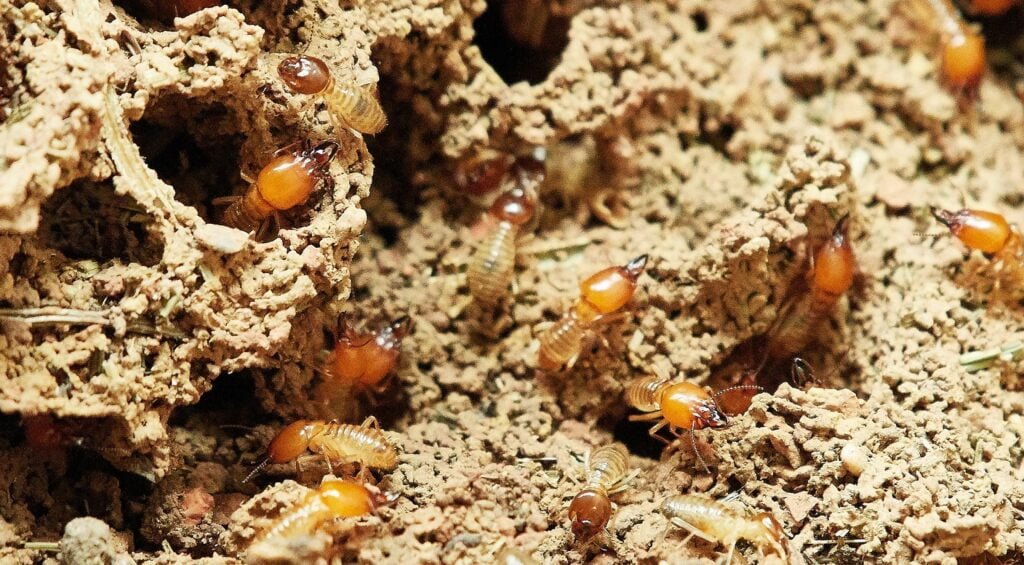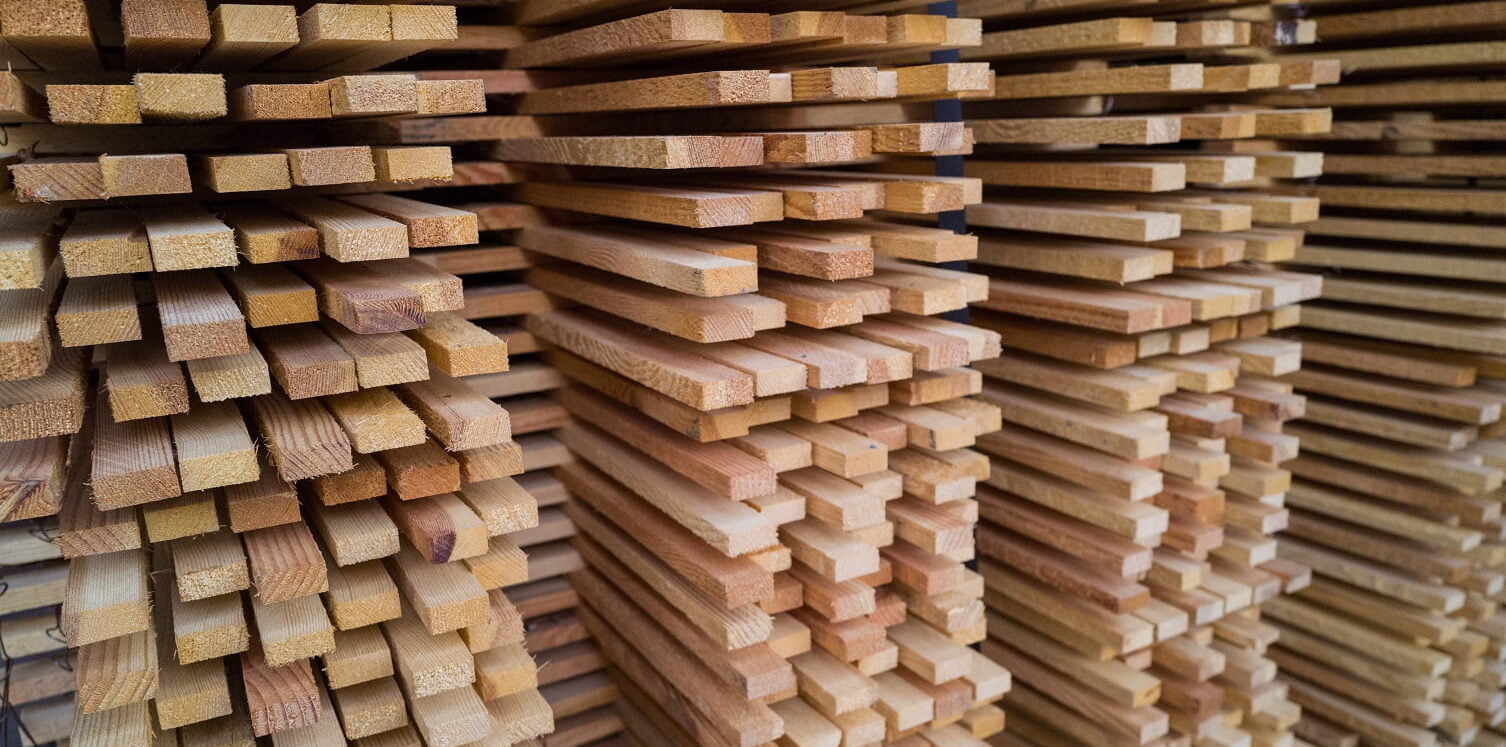Termite infestations pose a serious threat to wooden structures, resulting in damage and financial setbacks. These pests, known as termites, feed on the cellulose within the wood, gradually hollowing it out by creating tunnels and galleries.
Termites are social insects belonging to the order Isoptera, sometimes mistakenly called “white ants“, despite their distant relation to actual ants.
In this article, we will explore termite resistant wood types like Narra, Yakal, Molave, and Ipil, and will discuss treatment methods to enhance termite resistance.
Join us on this journey into the world of termite-resistant wood.
Are there Termite Resistant Woods in the Philippines?
Yes, there are termite resistant woods in the Philippines.
In the Philippines, a nation blessed with abundant forests and a rich diversity of wood species, the issue of termite infestation is a constant concern for homeowners, builders, and the longevity of wooden structures.
Termites are silent destroyers that can cause extensive damage to wooden materials, resulting in costly repairs and compromising structural integrity.
Fortunately, the development and utilization of termite-resistant wood have emerged as an effective solution to combat this pervasive problem.
What is Termite: Understanding Termite Infestation

Termites, commonly known as “anay” in the Philippines, are small insects that feed on cellulose-based materials such as wood. They form colonies and work silently, causing damage that often goes unnoticed until significant harm has already been done.
Termite infestations can compromise the strength and stability of wooden structures, including furniture, flooring, and even entire buildings. Hence, it is crucial to employ preventive measures to protect against these destructive pests.
Termite Resistant Woods Overview
Termite resistant wood refers to timber species that possess natural or enhanced resistance against termite infestation.
Commonly known as “anay resistant wood” or “treated wood”, these varieties undergo specific treatment processes that render them less appealing and less vulnerable to termite attacks
When incorporated into construction and furniture, termite-resistant wood becomes a valuable tool for homeowners and builders in substantially mitigating the risk of termite damage.
Types of Termite Resistant Woods in the Philippines
There are several types of woods in the Philippines known for their natural resistance to termite infestation. These include:

Narra (Pterocarpus indicus)
Narra wood, derived from the Pterocarpus indicus tree, is highly esteemed for its exceptional durability and natural resistance to termites. It possesses unique characteristics that make it unappealing to these wood-boring pests.
One of the key factors contributing to its termite resistance is the presence of natural oils and resins within the wood. These oils act as a deterrent, making the wood less palatable to termites and reducing the likelihood of infestation.
Additionally, the density of Narra wood further enhances its resistance to termite attacks, as termites find it more challenging to penetrate the wood fibers.
These combined qualities make Narra wood an excellent choice for various applications, including furniture, flooring, and construction projects where termite protection is crucial.
Yakal (Shorea astylosa)
Yakal wood, sourced from the Shorea astylosa tree, is widely recognized for its remarkable density and natural resistance to termites. The high density of Yakal wood contributes significantly to its termite-resistant properties.
Termites find it difficult to penetrate the wood fibers due to its compact structure, thereby reducing the risk of infestation. This natural resistance to termites makes Yakal wood particularly suitable for outdoor applications and heavy construction.
Its strength and durability allow it to withstand harsh weather conditions and resist decay, making it an ideal choice for decking, bridges, and other outdoor structures that are susceptible to termite damage.
The innate resistance of Yakal wood offers long-term protection against termite infestations, ensuring the longevity and structural integrity of the wooden elements in which it is employed.
Molave (Vitex parviflora)
Molave wood, derived from the Vitex parviflora tree, is renowned for its exceptional durability, strength, and resistance to termites. This hardwood species possesses inherent properties that make it highly resistant to termite attacks.
Molave wood’s density and compactness provide a formidable barrier against termites, preventing them from easily penetrating the wood and causing damage. Its natural durability further enhances its resistance to termites, ensuring that structures built with Molave wood can withstand the test of time.
Due to its remarkable strength and resistance to both termites and decay, Molave wood finds extensive usage in various applications, including furniture, flooring, and boat construction.
Its ability to resist termite infestation makes it a reliable choice for projects where long-term protection against these wood-boring pests is paramount.
Ipil (Intsia bijuga)
Ipil wood, obtained from the Intsia bijuga tree, exhibits natural resistance to termites owing to its high density and oil content.
The density of Ipil wood serves as a deterrent to termite infestation, as the compact structure makes it challenging for termites to penetrate the wood fibers. Additionally, the presence of natural oils within Ipil wood acts as a repellent, making it unattractive to termites.
These oils emit a distinct aroma that termites find displeasing, further discouraging them from attacking the wood. Ipil wood’s resistance to termites, coupled with its exceptional strength, makes it a popular choice for outdoor applications, decking, and bridge construction.
Its ability to withstand termite attacks and adverse environmental conditions ensures the longevity and reliability of structures made from Ipil wood, offering peace of mind to homeowners and builders alike.
Treatment Methods Enhancing Termite Resistance
In addition to naturally termite-resistant woods, there are also treated wood options available in the market. These woods undergo chemical treatment processes to enhance their resistance against termites. Some common treatment methods include:
1. Pressure Treatment
Pressure treatment is a widely used method to enhance the termite resistance of wood. In this process, wood is placed inside a large pressure vessel, commonly known as a treatment cylinder or autoclave.
The vessel is sealed, and preservatives are introduced under high pressure, allowing them to deeply penetrate the wood fibers. The most commonly used preservatives in pressure treatment include copper-based compounds, such as copper azole or copper chromium arsenate, or synthetic chemicals like permethrin.
The high pressure facilitates the absorption of the preservatives into the wood, effectively creating a barrier that termites find unappetizing or toxic.
The preservatives not only deter termite infestation but also provide protection against other wood-destroying organisms, including fungi and decay-causing organisms.
This treatment process significantly enhances the durability and resistance of the wood, making it less susceptible to termite attacks.
2. Borate Treatment
Borate treatment is another effective method used to improve the termite resistance of wood. Borate compounds, such as disodium octaborate tetrahydrate, are widely utilized for this purpose.
Borate treatments are typically applied to the surface of the wood through spraying, brushing, or dipping methods. The borate compounds easily penetrate the wood, as they have a low molecular weight and good solubility.
Once applied, borate compounds act as a natural termite repellent. Termites that come into contact with borate-treated wood ingest or absorb the borate compounds, which disrupt their digestive systems and metabolic processes, ultimately leading to their demise.
Borate treatments provide long-term protection against termite attacks, as the compounds remain active within the wood for an extended period.
In addition to their termite-repellent properties, borate compounds also exhibit antifungal properties, further protecting the wood from decay-causing organisms.
This dual functionality makes borate-treated wood a popular choice for applications where both termite resistance and resistance to fungal decay are essential, such as in framing lumber and interior woodwork.
Final Word: Philippine’s Termite Resistant Woods
Termites can cause significant damage to wooden structures and pose a challenge in the Philippines. However, termite resistant wood provides an effective solution to combat termite infestation.
Several wood species in the Philippines, such as Narra, Yakal, Molave, and Ipil, possess natural resistance to termites due to their density, oils, and other inherent properties.
Additionally, wood can be treated using methods like pressure treatment and borate treatment to enhance its resistance to termites.
These treatments create barriers or repel termites, ensuring the durability and longevity of wooden elements in construction and furniture.
By utilizing termite resistant wood, homeowners and builders can reduce the risk of termite damage and preserve the structural integrity of wooden materials.
Also Read: Scented Woods: A Fragrant Journey Into Nature’s Aromas
Well, what do you think about the article?
Did you enjoy reading “Termite Resistant Woods In The Philippines“? We really hope that you have enjoyed this article.
If you have any thoughts or comments about this post, please feel free to share them in the comment section below. We appreciate your feedback and would be glad to hear from you.
To see more content like this check the others section of Money For My Beer.

Chief Editor and Website Owner.
Hey, I’m Ryan, a software guy and the owner of Money For My Beer. I’m the one making sure all our posts on the site are awesome.
I usually handle tech stuff that might not be super interesting to everyone, like programming enterprise software, apps, games, and websites. Cool stuff, right? I also help clients with SEO and sometimes create games.

